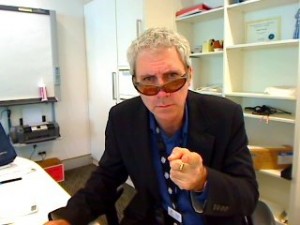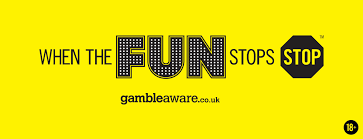After Stan Wawrinka wins in Melbourne, The Polska explains just how Aussie Tennis ended up in the bin, with the rest of us.
“Given that the Australian Open has just melted its way to a torched finish I figured we’d talk tennis. BTW – well done Stan – I think!
As youngsters we were all too aware of Australia’s glorious tennis history. Mrs Raven’s Grade IV regaled us of times tables, Captain Cook, Aborigines, Jesus, Mary and Joseph, the mother country, Her Majesty, the Darling River, Rod Laver, Rosewall, Hoad, and Sedgeman.
But something wasn’t quite right.
The photos of our champs that adorned the walls and the necks of our Oliver Bluebirds seemed to be from another era. There’s the young Rod Laver circa 1966, all Rockhampton freckles and carrot top short back and sides. Next to him is young Kenny Rosewall, a gangly youth with a Sunday School haircut and nothing but the weight of Brylcreem on his young shoulders. The guys in the photos didn’t look anything like the guys in the street in 1973, or the long-haired side burned brigade kicking the pigskin at the Bay Oval each Saturday. It turned out our tennis heroes were the heroes of our parents – heroes from another time. 

We understood all too well when we tuned in to watch the action from the Public Auditorium in Cleveland Ohio in November 1973. The Davis Cup final. Australia against the USA. Forty years on and I still remember it. Out they came: Rocket, Muscles and co., and just as we suspected they didn’t look much like the young men on the wall at home. You could hear them creaking all the way back in Glenelg East. Here comes the Rocket – 35 years old but looking kind of ancient, weedy and kind of bandy-legged. And if I’m not mistaken, I do believe he’s got a serious comb over going. He doesn’t look like that on my racket. There’s Muscles, all 39 years of him, 5ft nothing of skin and bone and craggy face – the Brylcreem being the only testament to the kid on the posters. He looks more like my Uncle Tony than Uncle Tony – but I figured Uncle Tony might stand a better chance in Cleveland, Ohio right now. Newc was the pup at just 29.
Now I understood. I was watching a fading glory, yesterday’s men at the end of days – and I was going to bear witness to the sinking of the sun. – This was going to be ugly.
But from the moment they take the court you can sense that somehow, against all odds, something special is going to happen. The old guys and the old magic are going to be on show just one more time. We’re going back to the 60s. Back to a different time and place. Somehow they’ve managed to do a deal – maybe with the Devil, or maybe with Old Father Time: “Let us do this one last time and we’ll pass quietly into history”. 

They are out-of-this-world during this one week in 1973. They conjur the spirits of a bygone era and its bygone glories. Rocket wins the first rubber: 8-10 8-6 6-8 6-3 6-1. He is majestic. There’s no grunt, there’s no power – just the majesty of the artist. He’s floating on air. The grace, the timing, the precision, the magic waving of the wand. He can’t miss. They can’t miss. They are sublime. Five – nil. To a 12 year old this is as good as it gets.
Sadly, this would be as good as it ever got again. In the end both sides sides stuck to the deal. There would be no encore. One last blessing and they were gone – and we were on our own.
Fast forward just six months. Wimbledon 1974. Men’s singles final. Ken Rosewall at the age of 40. Never won Wimbledon. But across the net things had changed. The Tom Gormans and Stan Smiths from Cleveland Ohio were gone – swept aside by the new breed – the “brash young Americans” had arrived. Jimmy Connors – 22 years old, serious haircut, two-fisted backhand, tennis brat, power-mum, steel racket and plenty of attitude. No Cinderella story here – 6-1 6-1 6-4 told the story. Game over for Aussie tennis.
The last 40 years have seen just slight aberrations in our long and slow decline. Evonne, Pat (Cash) and Lleyton won Wimbledon and Pat (Rafter), Lleyton and Samantha won US Opens. But they were blimps on an otherwise empty radar rather than a new Aussie tennis invasion.
Today’s ATP rankings show Lleyton at 43, Marinko Matesevic at 54, Bernie at 57 and Matthew Ebden at 67. Next is James Duckworth at 133. The women’s rankings show Sam Stosur as the only Australian in the top 100 at 17.
So what happened to Australian tennis?
Well, firstly you’ve got to remember that my special subject is the bleedin’ obvious, but basically the world changed – which in itself is both self evident and kind of significant. The glorious amateur era where tennis was pretty much the preserve of gentle sports folk from Australia and the USA was swept aside by the huff and bluster of the big money professional era. The deft groundstokes of yesterday were no match for the raw muscle serve-volley game that would dominate tennis for a generation. In the new big money world there’s no room for luck of the bounce, so the breeding ground of Australia’s champions – the grass courts of Forrest Hills, Kooyong, White City and countless more were consigned to history. No room for sport in a business world. In a world where there’s a disturbingly thin line between patriotism and nationalism, the tennis arena got pretty crowded pretty quickly – not only with players but with investors both private and public. Like most things tennis got a bit caught up in the Cold War, with tennis factories (better known as academies) springing up on both sides of the divide. Corporations in the west. Governments in the east. Australia was a long way away from this world.
That’s not to say that Aussie tennis folk stopped taking it seriously – but there’s serious and there’s serious if you know what I mean. We may take tennis seriously but there are plenty of other things competing for our attention. As a nation we just didn’t take tennis as seriously as the capitalists and communists who had the kids and coaches banging balls from dawn to dusk in the tennis factories of the world.
And I reckon that’s the bottom line – but not the only line. Professional sport costs big dollars. If you want to dominate you need to invest big – privately and publically. There’s plenty of competition for the investment dollar. In Australia, where do we place professional sports such as tennis in the government investment pecking order? Where do sport and the arts sit against health, education, technology and the environment in a country of 22 million and GDP of $US1.5T? Maybe at the end of the day our values are a bit different to the others. Maybe as a nation we are happy to trade off a couple of Number 1s for a few hospital beds and better schools.
But it’s not just money. Many things in life move in and out of fashion, and fashion is largely aspirational. Success builds momentum – and that success doesn’t have to be on the end of a huge public investment. Adam Scott says he would not have won the US Masters without growing up watching Greg Norman become the world number 1 (forget the major meltdowns for a moment). I wonder how many kids had their first swing of a golf club in the week after Mr Scott’s Augusta triumph? Would the A-League be going from strength to strength without the 2006 Socceroos? Maybe we underestimate the importance of role models? Maybe all it takes is one genuine tennis superstar and we’ll be back in business? The Canberra Times devoted three pages to telling me that Nick Kyrgios, the 18 year old Canberran rated 183 in the world is that man. Whatever happened to Bernard Tomic?
So if today you’re mourning or your Poms, celebrating, the demise of Australian tennis and thinking wistfully back to that golden week in 1973, and wondering when and how it all went so terribly wrong, then here’s something to think about:
Do you know how many American men are currently ranked in the top 50? The answer is one. A chap named John Isner comes in at 13. Remember Bjorn, Stefan, Mats and co? Today there are no Swedes in the top 100 either. The world has changed and as Johnny R said with the Pistols “we don’t care”.



